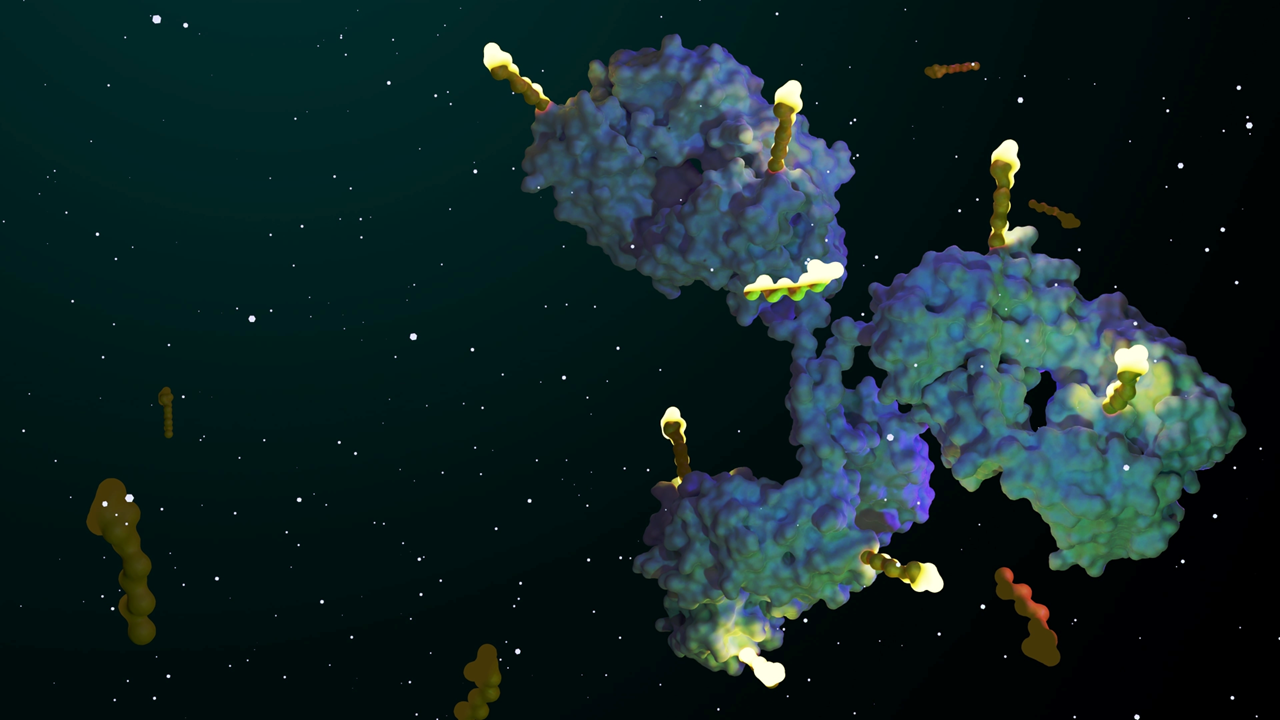The Foundation for the National Institutes of Health (FNIH) has made significant strides in the field of precision medicine with its innovative Lung-MAP (Master Protocol for Treatment of Non-Small Cell Lung Cancer) program.
Lung-MAP is a pioneering clinical trial designed to simultaneously test multiple treatments for non-small cell lung cancer (NSCLC) under a single, comprehensive “umbrella” protocol. This approach not only accelerates the clinical testing of new precision therapies but also facilitates the study of treatments for rarer genetic variations of lung cancer that would be challenging and costly to manage in traditional, individual trials.

Vice President, Science Partnerships
Foundation for the National Institutes of Health (FNIH)
Leading this initiative is Dr. Stacey Adam, Vice President of Science Partnerships at FNIH. While Lung-MAP has successfully recruited participants from rural and socioeconomically challenged backgrounds, significant efforts have also been made to enhance racial diversity to more accurately reflect the general US population diagnosed with NSCLC.
Dr. Adam shares her insights and the lessons learned from these endeavors, offering guidance for other clinical trial professionals striving to achieve greater diversity in their studies.
This interview delves into the specifics of Lung-MAP, exploring its innovative design, the challenges and successes in diversifying participant pools and the technological infrastructure supporting its complex data management needs.
We also look ahead to the future of Lung-MAP and its potential applications to other cancer types and diseases.
Dr. Adam provides an in-depth look at this groundbreaking trial and offers actionable advice for advancing precision medicine and diversity in clinical research.
XTALKS CLINICAL EDGE: Issue 3 — Interview with the FNIH
Xtalks Clinical Edge is a magazine for clinical research professionals and all who want to be informed about the latest trends and happenings in clinical trials. This magazine immerses you in a world where industry leaders, patient advocates and top researchers converge to provide the most insightful perspectives on clinical trials.
Could you give us an overview of the Lung-MAP trial and its significance in the treatment of NSCLC?
Dr. Adam: Lung-MAP, or the Lung Cancer Master Protocol, is a precision medicine clinical trial for people with advanced NSCLC that has continued to progress after first-line treatment with either chemotherapy or PD/L-1 inhibitors. NSCLC makes up about 85 percent of lung cancer diagnoses. There are few therapy options for people with progressive, metastatic NSCLC.
Lung-MAP is an umbrella trial, which allows many drugs to be tested simultaneously and for each of those drugs to be tested in patients most likely to benefit. Lung-MAP is testing several different treatments that target genetic changes found in NSCLC.
To join the trial, patient’s tumors are screened for the presence of biomarkers that would correlate with an available test treatment. Patients are then assigned to a treatment arm if their tumors have specific changes targeted by a test treatment. For patients whose tumors do not express a change affected by one of the treatments, there is one drug being tested that can be administered to any patient eligible for the trial. Even this “non-matched” treatment is a cutting-edge therapy for NSCLC, offering hope for many patients.
Lung-MAP is renowned for its innovative umbrella trial design. Can you explain how this approach may accelerate the development of cancer therapies compared to traditional clinical trial models?
Dr. Adam: Lung-MAP’s scientific, clinical and statistical designs and execution come from the top expert advisors in the NSCLC space in the US that provide continuous advice and suggestions for refinements and enhancements to better the protocol for patients.
Lung-MAP, like most master protocols, can allow accelerated testing and evidence generation for regulatory approval in many ways. Master protocols can create operational efficiencies because each subsequent drug to enter the study can be brought on more quickly. This is because the contractual details, protocol drafting and study activation operations have already been established and refined.
Lung-MAP’s protocol allows for screening patients at the time of their tumor’s progression on its first-line therapy, as well as prescreening while the patient is still being treated with that first therapy.
What have been the most significant challenges in ensuring racial and ethnic diversity within the Lung-MAP trials?
Dr. Adam: As with most trials, meeting patients in their own communities where they prefer to be treated by doctors they know and trust, is a challenge for Lung-MAP. To address this, we open Lung-MAP at as many of the 2,000+ clinical trial sites within the National Cancer Clinical Trials Network (NCTN) as possible.
Another challenge is ensuring that providers know about the trial and inform their patients about the potential to enroll. Lung-MAP keeps providers up-to-date through educational webinars that discuss current and imminently launching trial sub-studies. The trial also distributes a quarterly newsletter to all NCTN sites to provide clinicians and their staff with the most current trial information.
Can you share specific strategies or initiatives that Lung-MAP has implemented to improve racial diversity in its participant pool? What lessons have you learned that could be applicable to other clinical trials?
Dr. Adam: The trial has set specific goals to be representative of the populations that are affected by NSCLC, and the team has strongly encouraged sites to focus on recruitment of underserved populations for which the trial is lacking in enrollment. The trial has formed a committee that includes patient advocates, diversity, equity, inclusion and accessibility (DEIA) representatives and site coordinators.
In addition, the trial has a dedicated Site Coordinators Committee with leads who are geographically distributed across the active trial sites, which is usually between 400 to 700 sites. At least two of these primary site coordinator representatives are required to be from community oncology sites that represent underserved populations.
All of these dedicated resources aid the team in accruing racial, ethnic and geographically diverse patients. I think implementation and resourcing of these types of committees to help focus on diverse recruitment would be applicable to all trials.
Engaging rural and socioeconomically challenged populations has been a success for Lung-MAP. What methods have proven most effective in recruiting and retaining these groups?
Dr. Adam: One of the most successful methods Lung-MAP has deployed is leveraging the National Cancer Institute’s (NCI) Community Oncology Research Program sites within the NCTN. These sites are community oncology clinics that reach rural and socioeconomically challenged populations and serve them where they live, making it possible for them to participate in a trial.
In addition, the Lung-MAP team covers the cost of screening, re-biopsy (when needed) and treatment, helping to eliminate the medical costs of participation.
Finally, for certain populations of high need, such as veterans, Lung-MAP has employed clinical trial navigators to sites to assist patients with enrollment and navigation of the trial.
How does Lung-MAP manage the extensive data from genomic profiling and multiple sub-studies? What role does technology play in supporting the trial’s infrastructure?
Dr. Adam: Lung-MAP has an excellent statistical and data coordinating team at both the Fred Hutchinson Cancer Center and Cancer Research and Biostatics (CRAB) in Seattle. They have built the base data infrastructure for the trial, including the data pipeline for the screening protocol, as well as the tailored data infrastructure needed for each new sub-study. Fred Hutchinson and CRAB collaborate with Foundation Medicine to create the data piping needed for the solid tumor and liquid biopsy next-generation sequencing panel results from Foundation to CRAB. Tailored reports can be provided to the sites to help inform their patients’ treatment.
Looking forward, what are the next steps for Lung-MAP? Are there plans to expand the trial or to apply its model to other types of cancer?
Dr. Adam: Lung-MAP, in the near term, will continue to open new sub-studies. The team has more than ten new agents under consideration for the trial with a wide diversity of associated precision medicine biomarkers relevant to NSCLC. The trial will continue to expand to further sites within the NCTN.
As for plans to apply Lung-MAP’s design to other types of cancer, this has already been done by other groups both within cancer and other disease types. As Lung-MAP was the first registrational intent master protocol to be designed and launched, and was done so in collaboration with the FDA, the design and lessons learned have been applied to many subsequent trials, such as BEAT AML (acute myelogenous leukemia), DIAN-TU (hereditary Alzheimer’s disease), ACTIV (COVID-19) and others.
What advice would you give to other clinical trial professionals looking to implement similar diversification and precision medicine strategies in their trials?
Dr. Adam: Intentionality and proper resourcing — time, financial and human — are essential to recruiting a diverse population. Trials must be willing to keep diverse recruitment in mind starting from the design of the trial all the way through implementation. They also must be willing to invest what is needed to ensure follow-through on those commitments. Working with community sites and organizations that already serve the desired populations can enhance trial efforts.













Join or login to leave a comment
JOIN LOGIN